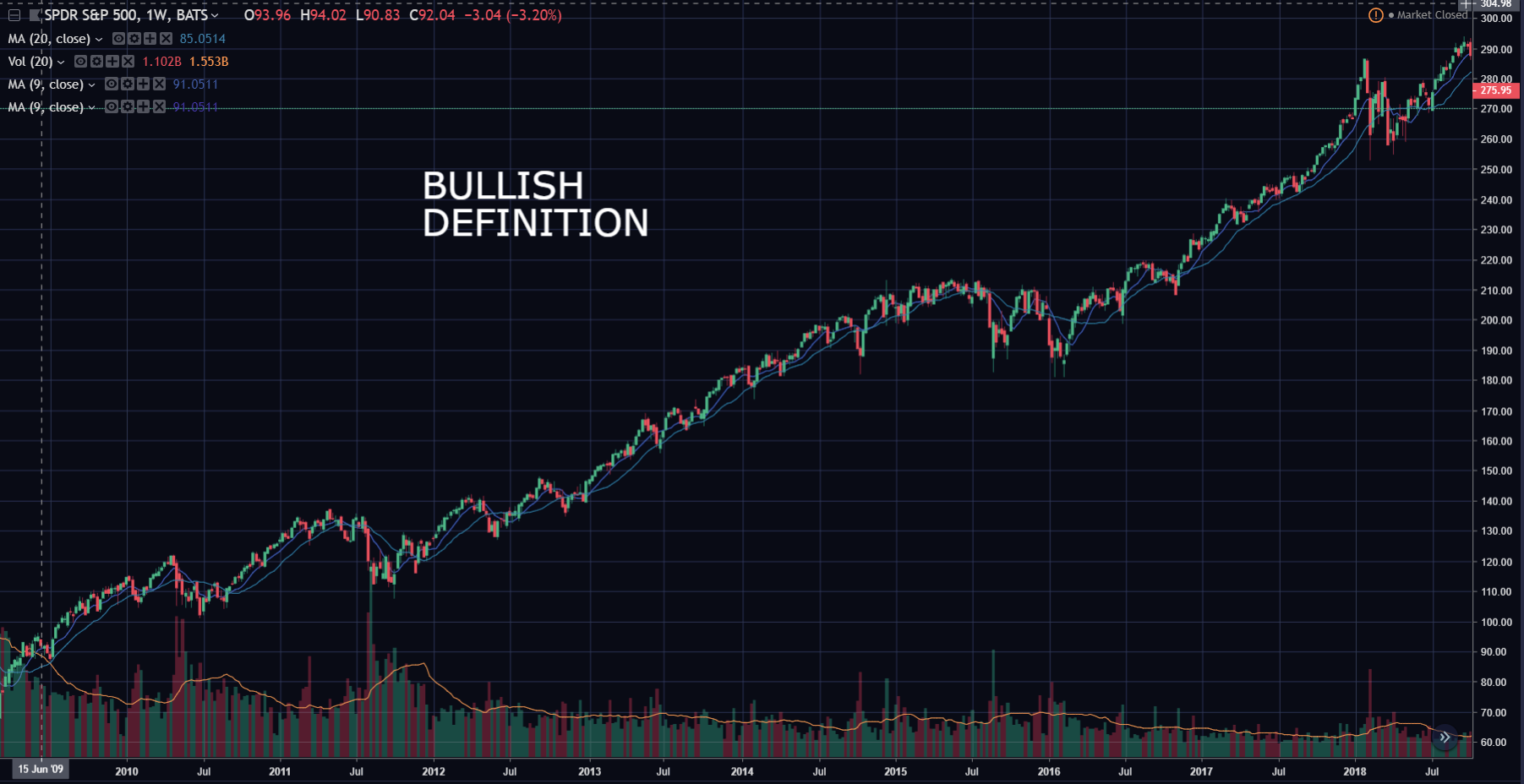 Bullish is a widely used term in the trading world to describe an uptrending market. You will often hear someone say, “That stock stills looks bullish” or “That is a bullish sign”. In general, a bull symbolizes future growth in finance, and is the origin of the phrase. A bull market is a way to describe a market that is uptrending, and expected to appreciate in value in the near future. In the 4 market cycles, a bull market is another way to describe the run-up phase.
What does a Bullish Trend Look Like?
A bullish trend is very simple: It is a market that is uptrending, and there are more buyers than sellers in the market. The market is consistently seeing a series of higher highs and higher lows. The SPY weekly chart is a great example of a bull trend:
Bullish is a widely used term in the trading world to describe an uptrending market. You will often hear someone say, “That stock stills looks bullish” or “That is a bullish sign”. In general, a bull symbolizes future growth in finance, and is the origin of the phrase. A bull market is a way to describe a market that is uptrending, and expected to appreciate in value in the near future. In the 4 market cycles, a bull market is another way to describe the run-up phase.
What does a Bullish Trend Look Like?
A bullish trend is very simple: It is a market that is uptrending, and there are more buyers than sellers in the market. The market is consistently seeing a series of higher highs and higher lows. The SPY weekly chart is a great example of a bull trend:
 In a bull market, dips are always bought up, as they suck and trap short-sellers in, work out the weak hands, and bring in a fresh set of buyers. There is positive sentiment everywhere, and market participants are optimistic about the future of the market. In an uptrending market, you will often hear people say “bulls are in control”.
Bull vs Bear
Another term you may have heard in finance: bearish. This is the opposite of a bull market, and is term used to refer to a downtrending market. We have not seen a bear market since 2008, but another one will come eventually. It pays to study bear markets and understand bearish price action so you will be prepared when one arrives. Learn more about what a bear market and bearish characteristics in this article here.
In a bull market, dips are always bought up, as they suck and trap short-sellers in, work out the weak hands, and bring in a fresh set of buyers. There is positive sentiment everywhere, and market participants are optimistic about the future of the market. In an uptrending market, you will often hear people say “bulls are in control”.
Bull vs Bear
Another term you may have heard in finance: bearish. This is the opposite of a bull market, and is term used to refer to a downtrending market. We have not seen a bear market since 2008, but another one will come eventually. It pays to study bear markets and understand bearish price action so you will be prepared when one arrives. Learn more about what a bear market and bearish characteristics in this article here.
Bullish Definition: Trading Terminology For Beginners
Share:
Facebook
Twitter
Pinterest
LinkedIn
Stock & Option Software used by Bulls on Wallstreet

Social Media
Related Posts
Market Speculator Part-Time | Swing Trade Report
January 23, 2025
Trading Watch List 01.23.2025
January 22, 2025
Market Speculator Part-Time | Swing Trade Report
January 21, 2025

Stop Guessing.
Start Trading.
Secured Checkout Providers
- Home
- Live 60-Day Trading Boot Camp
- Day Trading
- Part Time Trading
- Events & Work Shops
- Tc2000
- Tc2000
- About
- Blog
- FAQ
- Contact